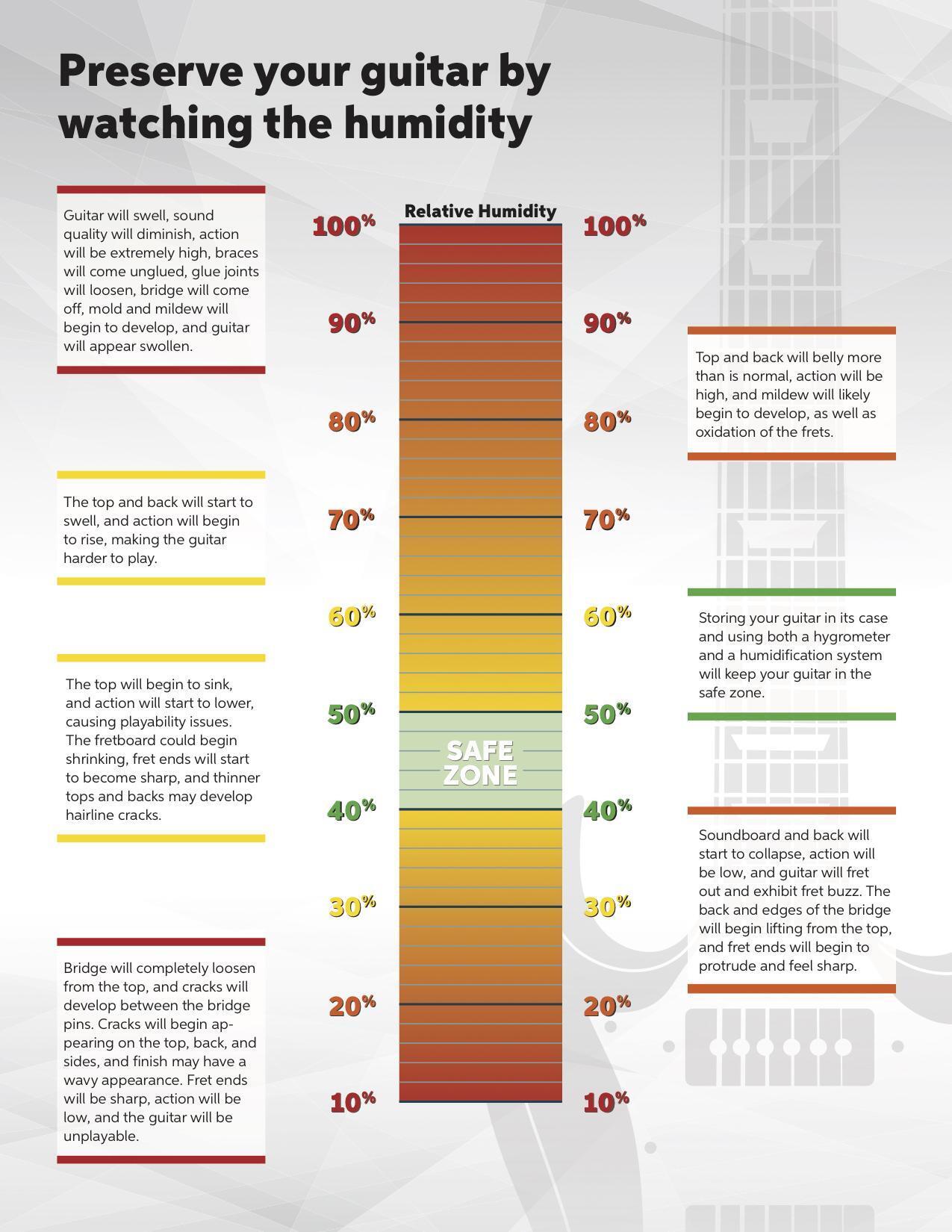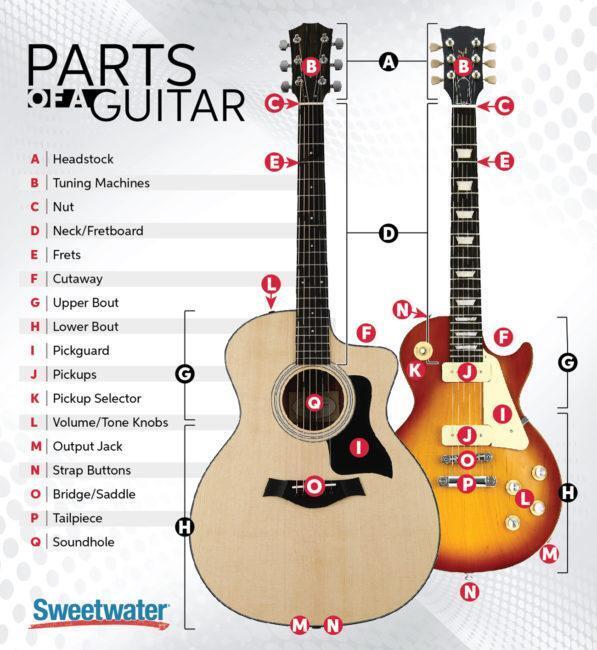Ah, the melodious strum of a finely tuned guitar – music to the ears, quite literally! But before you start shredding like a rock god or serenading your crush with a sweet ballad, it’s essential to make sure your trusty six-string is well taken care of. In this essential guitar care and tuning guide, we’ll walk you through all the do’s and don’ts of guitar maintenance with a healthy dose of humor and maybe a few dad jokes along the way. So grab your guitar, tune in, and let’s rock (and roll)!
Contents
- 1 Understanding the Basics of Guitar Care
- 2 Maintaining Optimal Humidity Levels for Your Guitar
- 3
- 4 Step-by-Step Instructions for String Changing
- 5 Advanced Techniques for Tuning Your Guitar
- 6 Troubleshooting Common Guitar Setup Issues
- 7 Protecting Your Guitar During Travel and Storage
- 8 FAQs
- 9 Rock on! Keep those strings tight and your guitar gleaming
Understanding the Basics of Guitar Care
Guitars are like your best friend – they always have your back, and they sound pretty good too. But just like your best friend, they require a little TLC to keep them in great shape. Here are some basic tips to make sure your guitar stays not just playable, but shred-worthy:
First things first, let’s talk about cleaning. No one wants to play a grimy guitar that’s covered in gunk. Grab yourself a soft cloth and give your guitar a good wipe down after each jam session. Don’t forget about those hard-to-reach spots like the headstock and bridge. A clean guitar is a happy guitar!
Next up, let’s talk about strings. Those bad boys can get pretty grungy after a while, so make sure you change them regularly. A fresh set of strings will not only make your guitar sound better, but it’ll make playing a whole lot easier. And if you’re feeling fancy, you can even treat your strings to a little string cleaner to keep them in top shape.
Finally, let’s chat about storage. Your guitar needs a comfy place to rest when you’re not playing it. Invest in a good quality guitar case to keep your instrument safe from bumps, scratches, and dust. And don’t forget to loosen the strings a bit if you’re putting your guitar away for an extended period of time. Your guitar will thank you!

Maintaining Optimal Humidity Levels for Your Guitar
Guitars are sensitive beings, just like humans. They need to be kept in the right environment to thrive and produce beautiful music. One of the most important factors to consider is humidity levels. Here are some tips on how to maintain optimal humidity levels for your guitar:
First and foremost, invest in a good quality guitar humidifier. This little device will ensure that your guitar stays moisturized and happy, just like a spa day for your instrument. Make sure to check it regularly to ensure it’s doing its job properly.
Keep your guitar away from extreme environments. Just like you wouldn’t want to be stuck in a sauna or the Arctic, your guitar doesn’t want to be subjected to extreme humidity levels. Find a nice, cozy spot for your guitar where the humidity levels are just right.
Don’t forget to monitor the temperature as well. Your guitar will thank you for keeping it in a comfortable environment. Remember, a happy guitar equals beautiful music.

polishing-your-guitar”>The Essential Guide to Cleaning and Polishing Your Guitar
So, you’ve decided it’s time to give your beloved guitar some TLC. Well, fret not (pun intended), because we’ve got right here! Follow these simple steps and your guitar will be gleaming like a rockstar’s smile in no time.
First things first, gather your cleaning supplies. You’ll need:
- Microfiber cloth
- Guitar polish
- Guitar cleaner
- Old toothbrush (for those hard-to-reach spots)
Now, onto the cleaning process. Take your microfiber cloth and gently wipe down the body of your guitar, making sure to remove any dust or residue. Next, use the guitar cleaner to clean the fretboard, paying special attention to any built-up grime or sweat. Use the old toothbrush to really get into those frets and clean out any dirt that may have accumulated over time.
Once your guitar is sparkling clean, it’s time to polish it up and make it shine like a diamond in the rough. Apply a small amount of guitar polish to a clean section of your microfiber cloth and gently buff the body of the guitar in circular motions. Voila! Your guitar is now looking brand new and ready to rock out like never before.

Step-by-Step Instructions for String Changing
To change a string on your instrument, follow these simple steps:
First, make sure you have all the necessary materials handy:
- New string
– Tuner
– String winder (optional but highly recommended)
– Scissors
Next, loosen the old string by turning the tuning peg counterclockwise until it is completely slack. Once the string is loose, carefully cut it with your scissors and remove it from the instrument.
Now, take your new string and insert one end into the corresponding hole on the bridge of your instrument. Pull the string through until there is a few inches of slack on the other end.
Using your string winder, gently turn the tuning peg clockwise to tighten the string. Make sure the string is properly seated in the nut and bridge as you tighten it. Once the string is fully tightened, use your tuner to adjust the pitch to the desired note. And voila! You’ve successfully changed a string on your instrument. Good job!
Advanced Techniques for Tuning Your Guitar
So you’ve mastered the basics of tuning your guitar, but now you’re ready to take your tuning game to the next level. Brace yourself, because we’re about to dive into some truly advanced techniques that will have your guitar sounding pitch perfect in no time.
First up, let’s talk about harmonics. Using harmonics to tune your guitar is a little-known trick that can work wonders. Simply lightly touch your finger on the string at the 5th, 7th, or 12th fret while plucking the string. You should hear a bell-like tone. Match this tone with the harmonic sound of the same pitch on another string. It’s like magic, but with a little bit of rock and roll thrown in for good measure.
Next, let’s explore the world of alternate tunings. Sure, standard tuning is all well and good, but why not shake things up a bit? Experiment with open tunings like DADGAD or Drop D to give your guitar a whole new sound. Just be prepared for some confusion when you come back to standard tuning. It’s all part of the fun!
Lastly, don’t underestimate the power of a good electronic tuner. While some purists may scoff at the idea of using a tuner, there’s no shame in letting technology lend a helping hand. Grab yourself a quality tuner and let it guide you to guitar tuning perfection. You’ll thank us later when you’re hitting those sweet chords like a pro.
Troubleshooting Common Guitar Setup Issues
So you thought you had your guitar setup perfectly, but now you’re experiencing some common issues? Don’t fret (pun intended), because we’ve got some troubleshooting tips to help you get back on track!
First things first, let’s tackle that pesky fret buzz. If you’re hearing that annoying buzzing sound when you play certain notes, it could be a sign that your strings are too low. Grab your trusty Allen wrench and adjust the action on your guitar. Raise those strings up a bit and see if that helps eliminate the buzz.
Next up, let’s talk about tuning stability. Is your guitar constantly going out of tune, driving you crazy? Take a look at your nut and make sure it’s properly lubricated. A little graphite from a pencil can do wonders to help those strings glide smoothly and stay in tune.
And finally, if you’re noticing strange rattling or vibrating noises coming from your guitar, it could be a loose screw or a worn-out saddle. Grab your screwdriver and tighten up any loose screws, or consider replacing the saddle if it’s seen better days. Your guitar will thank you!
Protecting Your Guitar During Travel and Storage
So, you’ve decided to take your beloved guitar on the road with you or need to put it away for a while. How do you keep it safe and sound during its travels or while it’s in storage?
First things first, invest in a quality guitar case. Don’t just shove your precious instrument into any old bag or box. A good case will provide protection from the elements and prevent any accidental bumps and scratches.
Next, loosen the strings before you stow your guitar away. This will help reduce tension on the neck and prevent any warping or damage while it’s not being played. And don’t forget to store your guitar in a cool, dry place to avoid any potential humidity-related issues.
Lastly, consider getting a guitar stand to keep your instrument off the ground and out of harm’s way. Trust us, your guitar will thank you for it!
FAQs
Why is proper guitar care important?
Well, if you want your guitar to sound like a heavenly angel playing a lullaby, then you better take care of it! Neglecting your guitar can lead to all sorts of issues like out-of-tune strings, cracked wood, and dusty pickups.
How often should I clean my guitar?
You should clean your guitar as often as you clean your toothbrush after eating a tub of Nutella – and trust me, that stuff gets everywhere. Wipe down your guitar after every use to keep it looking fresh and sounding sweet.
How should I store my guitar when not in use?
Don’t just toss your guitar in the corner like a forgotten prom date. Store it in a cool, dry place away from extreme temperatures and direct sunlight. You wouldn’t leave your chocolate bar out in the sun, would you?
How do I tune my guitar properly?
Tuning your guitar is like tuning a radio station – you want it to sound crystal clear. Invest in a good tuner and make sure each string is in perfect harmony with the rest. Your ears will thank you.
What should I do if my guitar gets wet?
If your guitar takes a little dip in the pool (hey, accidents happen), don’t panic! Wipe it down gently with a soft cloth and let it air dry completely before strumming again. Just make sure to keep the waterworks to your emotional songs, not your guitar.
Rock on! Keep those strings tight and your guitar gleaming
Thanks for tuning in to our essential guitar care and tuning guide! Remember, a well-maintained guitar is a happy guitar. So don’t be a fretful fretter – follow our tips and keep strumming those sweet riffs. Stay in tune and keep on rockin’!



